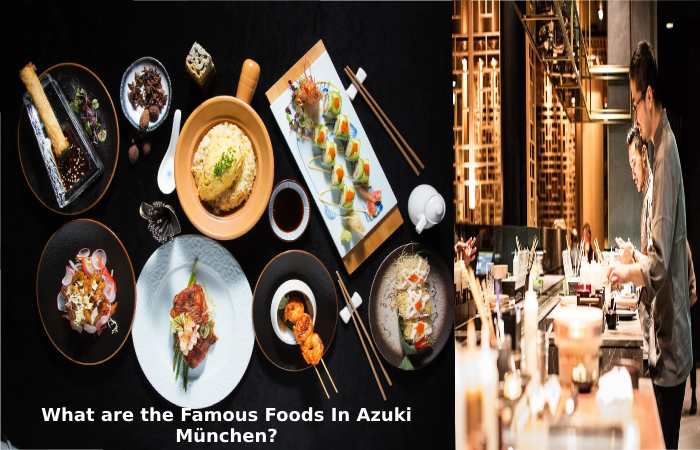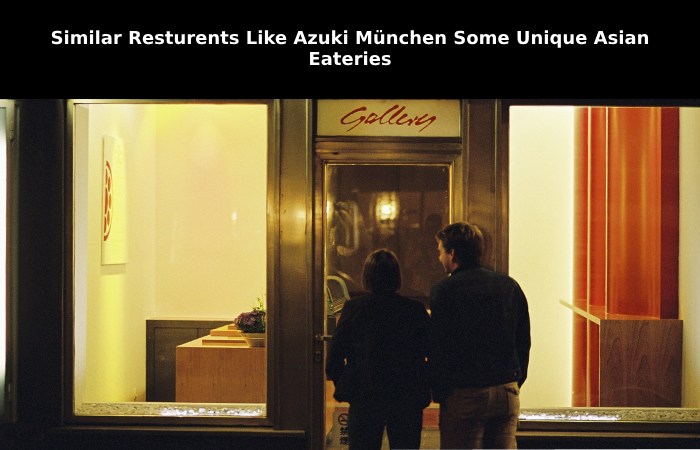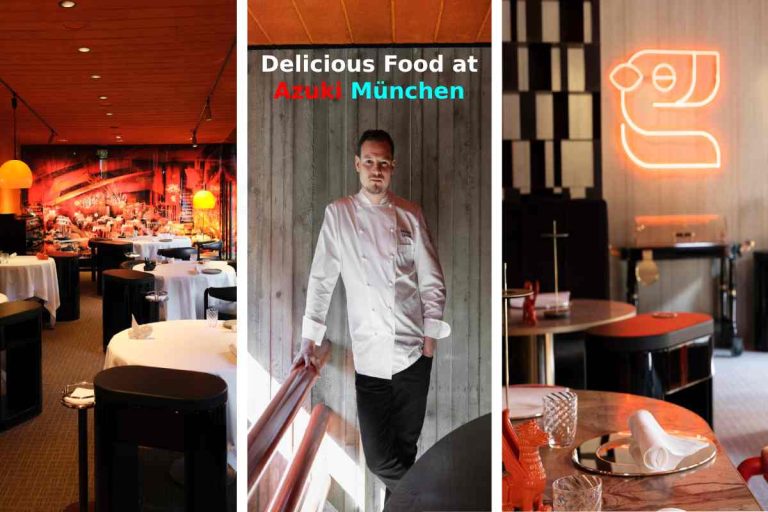Azuki München, a fine dining establishment in Munich that serves a distinctive combination of Asian cuisine, is a Japanese and Vietnamese restaurant. The restaurant’s interior design creates a warm and inviting atmosphere, contributing to its exquisite feel. Given the high caliber of cuisine and service provided, the rates are somewhat pricey but still worth while.
Azuki, close to the Opera House, is a great place to have dinner before or after a performance. The establishment has a lovely outdoor seating area with a breathtaking view of the Opera house.
Azuki’s menu offers diverse options, such as genuine Vietnamese and Japanese meals. Black cod, crispy rice, spicy tuna, and truffle sake sushi are a few of their specialties. They also have a great assortment of wines, soft drinks, and cocktails for your meal. Their matcha tiramisu is among the best in the world, and you must try it.
Azuki is still an excellent option for people looking for a distinctive eating experience in Azuki München, despite some conflicting opinions. It is a terrific venue to celebrate a special event or spend a night with friends because of its elegant atmosphere, mouthwatering cuisine, and excellent service.
Table of Contents
What are the Famous Foods In Azuki München?

There are an astounding 180 seats inside the Azuki and an additional 180 chairs outdoors on the lovely patio. It was the original location of the Palais Toerring-Jettenbach, which dates back to 1747. Leo von Klenze’s 19th-century remodeling gave the building its current north face.
Japanese healthy food is the main focus of the menu at Azuki. Excellent sushi and sashimi remain guaranteed by Haruko Kato and her colleagues, who previously worked at the now-closed Tenno. A good assortment of well-executed and believable nigiri, maki, and chirashi are available.
Of course, when the Tran family launches a new restaurant, Vietnamese food is a requirement. Classics, including Lucky Rolls, Pho Bo, and other bowls are available. The pomelo salad with fresh herbs and the red curry with prawns (presented in a coconut) were both delicious.
The interior design of Azuki München has received extensive consideration, just like that of all the other restaurants owned by the Tran family. Caroline Rauh, the interior designer who had previously created the designs for the other restaurants, was responsible for both the design and execution. The more somber and contemporary architecture at Azuki is in tune with Japanese food. Particularly noteworthy is the large table in the restaurant’s center, featuring a wood tabletop.
Particularly noteworthy is the large table in the restaurant’s center, featuring a wood tabletop. You can sit correct at the sushi bar if you enjoy observing the sushi chefs in action.
Adjacent to the eatery is a bar that provides access to the patio during pleasant weather. After the restaurant shuts, this is a fantastic spot to stay for a bit or have an aperitif.
Of course, Anoki’s location, quality, and atmosphere all impact how much food costs. All of this, however, falls within the parameters set by similar eateries such as Matsuhisa or Izakaya. If you want to savor fine Asian food in Munich’s downtown area, azuki München is the ideal location.
Similar Resturents Like Azuki München Some Unique Asian Eateries

Ukiyo
Anyone who has recently visited one of Munich’s new Asian restaurants has not only remained treated to consistently creative pan-Asian cuisine but also an eye-opening visual experience, where cutting-edge interior design coexists with a unique backdrop for the culinary masterpiece on the plate. In Japanese, ukiyo roughly translates to “live and enjoy,” and that provides the mood: Here, guests can enjoy modern Japanese cuisine prepared by Isabelle Tran and her brother Jean-Pierre, who left Vietnam for Japan and now successfully operate two restaurants, Jacci on Ysenburgstrasse and Bi Béo on Einsteinstrasse. They specialize in sushi, sashimi, nigiri, and tartare, usually served with fish and seafood during lunch.
Madame Chutney
The setting alone is harmonious: images, advertisement boards, and retro Indian furnishings are the only additions to the nearly intact colonial design of the original Masters Home, which included a piano, wood paneling, and fireplace. A combination of a posh Indian restaurant in London, such as the Dishoom Carnaby in Soho, and a better backpacker hideout remain created by the shabby-chic tables and chairs, multicolored candle cups, and a light fixture on the ceiling. The similarities don’t end there: you need to speak English to dine at Madam Chutney since, similar to the website where you make your reservation, the newspaper-style menu remains likewise written in the language of the former colonial authority.
Soy
Is a Vietnamese eatery devoid of seafood, pork, and fish sauce? That’s correct: the only meal served at Soy in the former Martini Club on Theresienstrasse is vegan. And that’s a good thing, as we saw during an evening visit, that at 6.30 p.m. the huge restaurant remains almost completely booked. The audience, primarily young and enjoying vegetarian food, maybe sitting beneath a Buddhist deity in the lotus flower field or at the spacious bar with a golden Buddha. The cuisine is broad, and the atmosphere is stylish.
Conclusion
Fine dining in a historic setting with Asian fusion food in exquisitely furnished rooms is an experience that comes with a price, but it’s worth it. Not only is the restaurant and bar open until one in the morning, but they’re also great for an aperitif or nightcap before or after the opera or theater.


